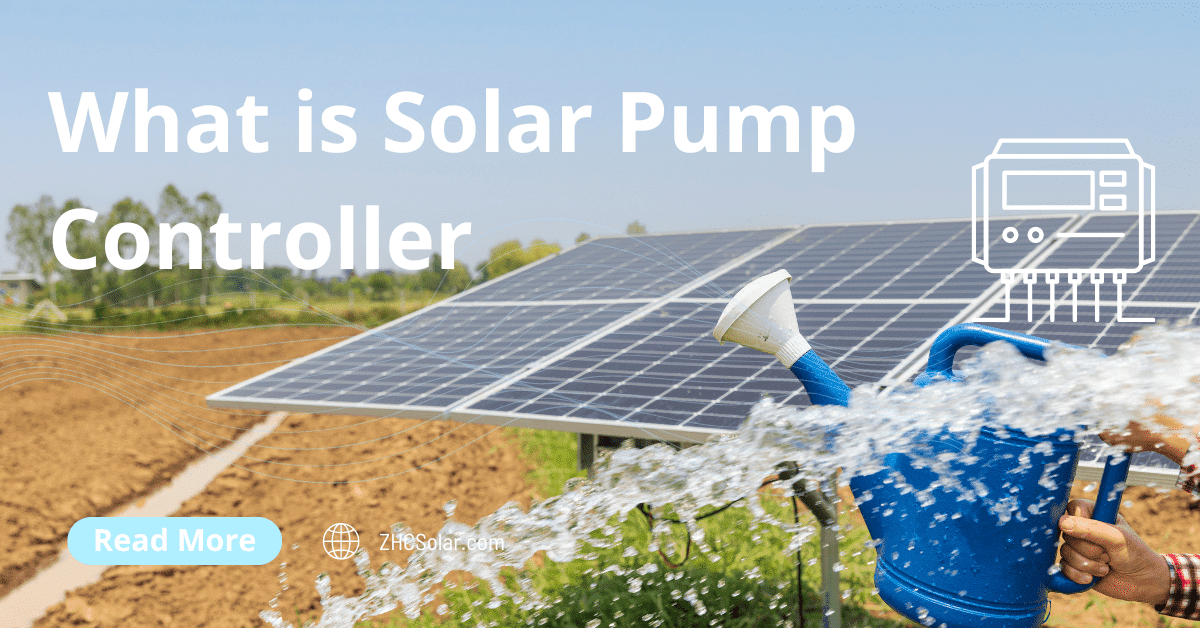The solar water pump is a vital part of your solar powered water system. It pulls water from the ground, through an underground pipe, and into your home’s water supply. If you don’t have a solar water pump with well controlled, you run the risk of water shortages in your household.
Having a quality solar water pump controller has its benefits. Besides ensuring that there is always enough water for drinking and other needs, solar water pumps reduce carbon emissions and help you save money on energy bills.
Read about the various types of solar water pump controllers, their benefits, and tips for setting them up in this blog.
What is a Solar Pump Controller?
A solar pump controller is a key part of solar pumping systems. It’s a digital device that converts the direct current from solar panels into alternating current for use by the pump, which ensures that water flow is maintained at a constant rate.
The main function of solar pump controllers is to ensure that solar power is used efficiently and effectively in solar pumping systems. They convert the voltage and current generated by solar panels into a mix that better suits the pump, ensuring optimal performance and efficiency.
Pal with Solar inverters, or solar variable frequency drives, can take solar DC power supply or single/three-phase AC power supply and are equipped with MPPT control systems to maximize the output power of the PV array.
Benefits of Solar Pump Controllers
Solar pump controllers optimize the current and voltage available from photovoltaic panels to the pump, making them more efficient and cost-effective.
Solar pump systems include photovoltaic panels, electronic devices, and AC motors that use generated power from PV to convert into the required form. Not requiring batteries or starters further reduces operating costs.
Plus, they don’t require manual intervention during operation, which is beneficial for safety and efficiency.
Overall, solar pump controllers are an environmentally friendly option for irrigation of farms and gardens.
Types of Solar Pump Controllers
Depending on the size and capacity of the solar pump, there are two types of solar pump controllers–one for small pumps (less than 0.75 kW) and one for large pumps (over 1.5 kW). The cost of a solar pump controller depends upon its power capacity and specifications.
Solar DC pump controllers are available in 24, 48, and 72-volt models, while solar AC pump controllers come with power capacities between 2.2kW to 110kW.
How to Install a Solar Pump Controller
The installation process for solar pump controllers is straightforward and can be done by a qualified electrician.
When selecting a solar pump controller, it’s important to take into account the dimensions of your system and the wattage of your solar panel(s). Once you have those details, you can begin shopping for the correct model or controller.
the right steps to mount a solar pump controller is start from the water pump side, connect the controller with pump first, then connect the controller with the solar pv.
Troubleshooting Tips for Solar Pump Controllers
– Ensure that the solar pump controller is receiving the right amount of current and voltage from the photovoltaic panel.
– Look out for diagnostic features and protection from harmful conditions such as short circuits, overheated controllers, under voltage, locked pumps and reverse polarity.
– Consider using a replacement solar pump controller, as originally supplied by various manufacturers.
– Another troubleshooting tip is to check the temperature difference between the solar panels and the bottom of the hot water storage tank. If it’s too high or low, it could affect performance of the solar pump controller.
– Lastly, if required, activate ‘frost mode’ to prevent frost damage. This will stop the solar pump controller from operating when it gets too close to freezing temperature on the roof.
How Solar Pump Controllers Work
A solar pump controller works by sensing the current drawn from a solar PV panel and adjusting it to the desired voltage level automatically. It does so using an inverter, MPPT (Maximum Power Point Track) device, and VFD (Voltage-Fed Drive). These three devices work together to convert the output voltage of a solar PV panel into the required voltage for a water circuit.
Frequently Asked Questions
What is a solar pump controller and what does it do?
A solar pump controller is a key component in a solar pumping system. It is used to optimize a solar water pumping system by translating the current and voltage from photovoltaic panels into a combination better suited for the pump.
What are the benefits of using a solar pump controller?
A solar pump controller optimizes solar water pumping systems by translating the current and voltage available from photovoltaic panels into a combination that is better matched to that needed by the pump. This can save you up to 50% in energy costs when compared to diesel pumps.
What are some potential drawbacks to using a solar pump controller?
There are some potential drawbacks to using solar pump controllers. The main one is the initial cost – solar pump controllers require a higher investment than traditional diesel pumps. Additionally, solar pump controllers can be affected by weather conditions, such as rain or snow, which can decrease their efficiency.
Conclusion
A solar pump controller is a powerful addition to your solar water system. It allows you to manually operate the pump when it’s not in use from a mobile app or solar panel.
The benefits of using a solar pump controller include less wear and tear on your water system, less maintenance, and increased water production. The next time you see a solar panel, ask about installing one for your home. You’ll be glad you did!
UseFul Topics:
What is Solar Charge Controller Load Output?
How to choose RV Solar Panel Kits
